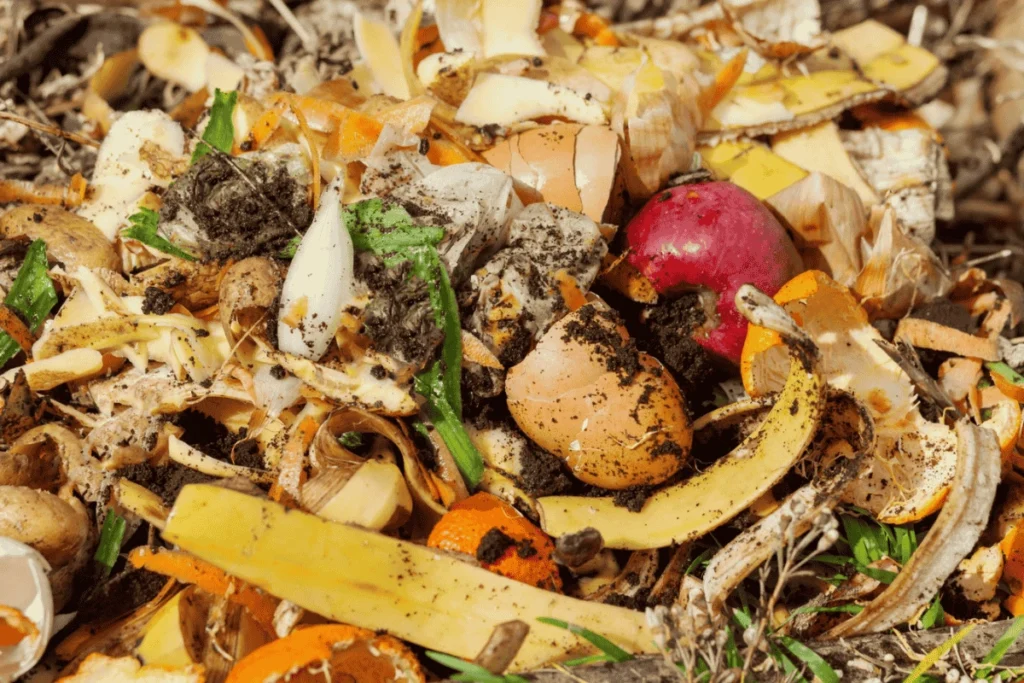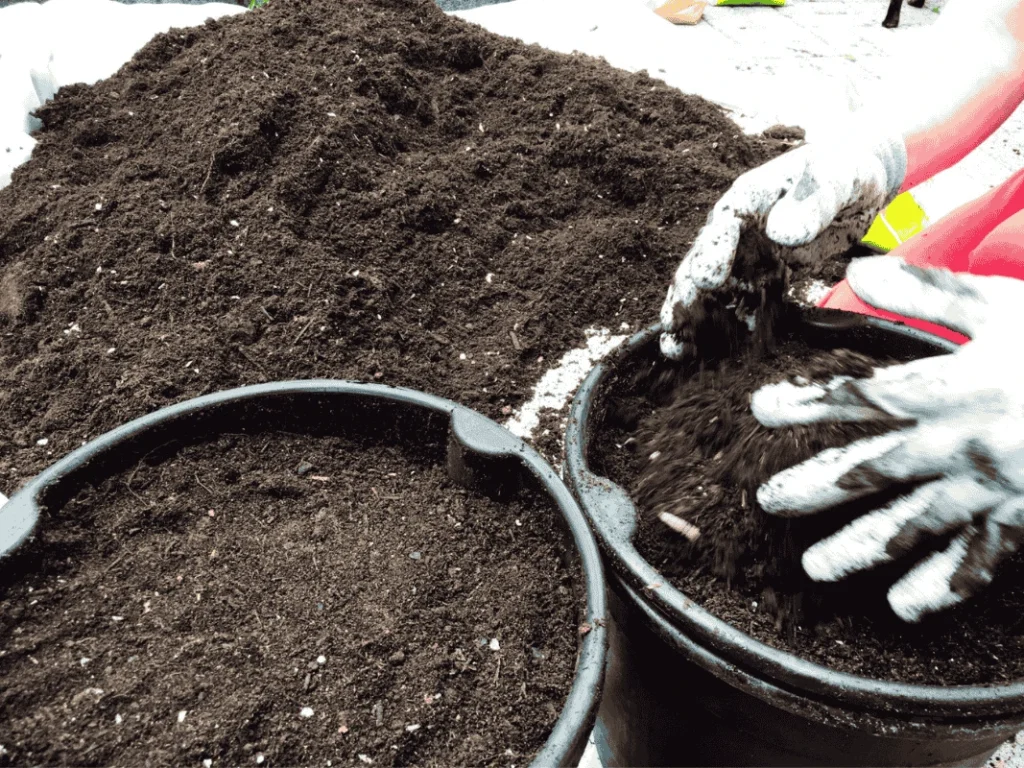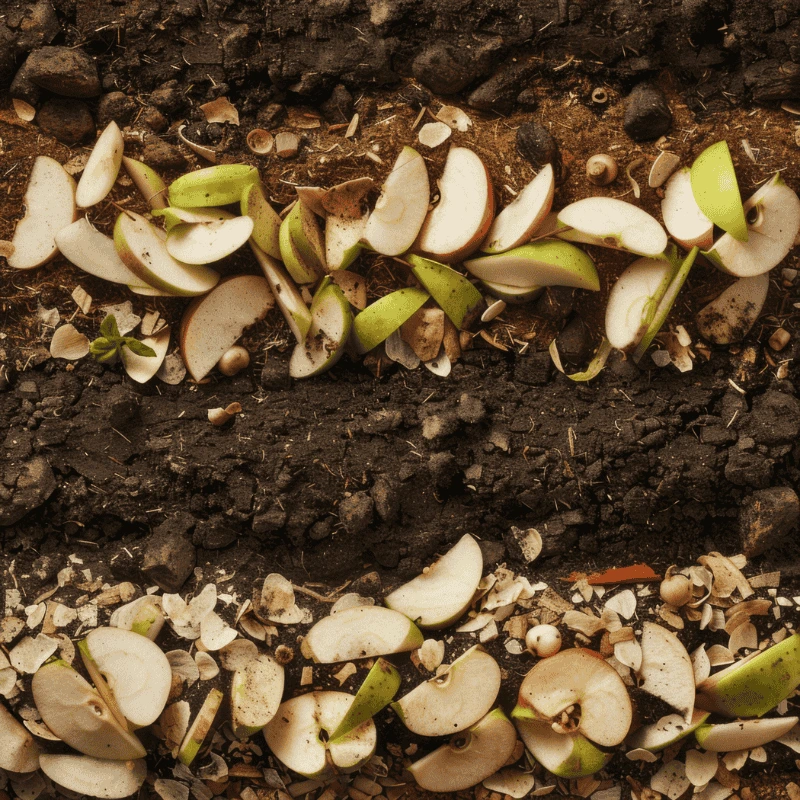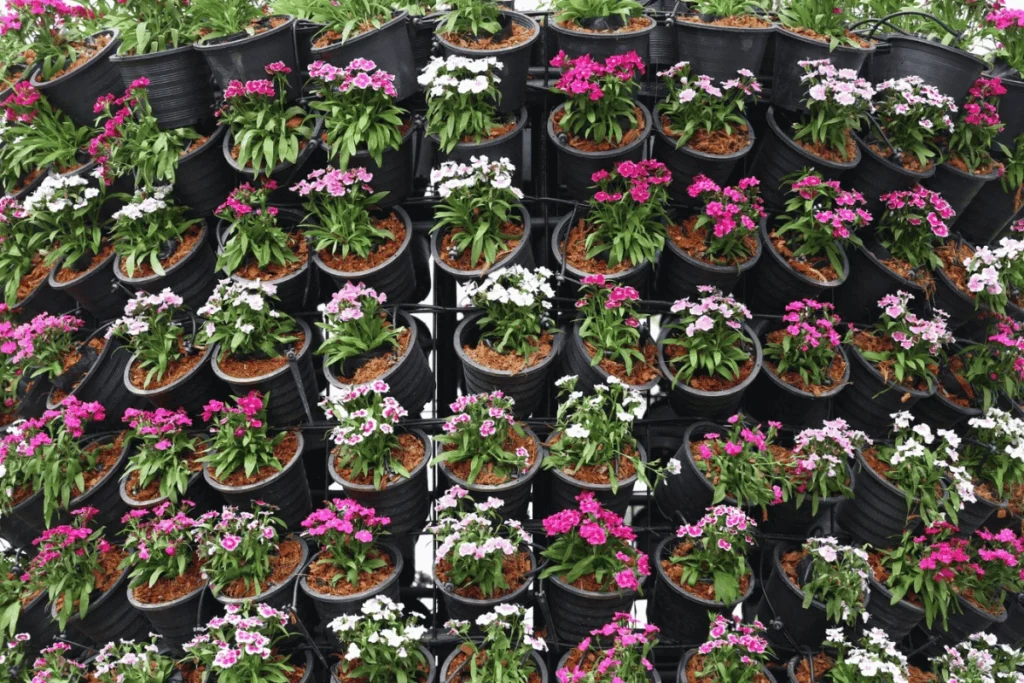🌱 Nourish Your Vertical Garden Naturally
One of the best ways to enrich the soil in your vertical garden is by learning how to use homemade compost in vertical gardens. 🌎 Composting is an eco-friendly and cost-effective method, packed with essential nutrients that enhance plant growth. 🌿 By using homemade compost, you can reduce food and yard waste while promoting healthier plants. 🌱
This guide will show you exactly how to use homemade compost in vertical gardens, create it effectively, and maximize its benefits for healthier plants. 💚
✅ Why Use Homemade Compost in Vertical Gardens?
Understanding how to use homemade compost in vertical gardens 🌿 ensures that your plants get a steady supply of nutrients throughout the growing season. 🌸
✔️ Nutrient-Rich: Supplies key nutrients like nitrogen, phosphorus, and potassium for healthy plant growth. 🍃
✔️ Improves Soil Health: Enhances soil structure, promotes better drainage, and retains moisture effectively. 💧
✔️ Eco-Friendly: Reduces organic waste and supports sustainable gardening practices. 🌍
✔️ Cost-Effective: Saves money on fertilizers and soil amendments. 💵
🧑🌾 How to Make Homemade Compost

Before applying compost, it’s crucial to understand how to use homemade compost in vertical gardens 🌱 to avoid over-fertilizing and damaging delicate roots. 💧
1️⃣ Gather Compostable Materials 🥦🍂
- Green Materials (Nitrogen-Rich): Fruit and vegetable scraps, coffee grounds ☕, tea leaves 🍃, and fresh grass clippings.
- Brown Materials (Carbon-Rich): Dry leaves 🍁, shredded paper 📄, cardboard, and sawdust.
2️⃣ Create the Compost Pile or Bin 🗑️
- Use a compost bin, tumbler, or create a pile in a shaded, well-ventilated area. 🌳
- Layer green and brown materials alternately to maintain a proper nitrogen-to-carbon balance. 🔄
3️⃣ Maintain the Compost 🔄
- Aeration: Turn the pile weekly to ensure oxygen flow and speed up decomposition. 🌬️
- Moisture: Keep the pile as moist as a wrung-out sponge; add water if it becomes too dry. 💦
- Temperature: Compost should feel warm inside (55–70°C or 130–160°F) for effective breakdown. 🌡️
4️⃣ Harvest the Compost 🥕
- Fully mature compost is dark, crumbly, and has a pleasant, earthy aroma. 🌱
- Sift out any large, undecomposed pieces and return them to the compost pile. 🔁
🎥 For a visual demonstration and extra tips on how to speed up compost production, check out the video below! 👇
🏢 Composting Tips for Small Spaces
Discover how to use homemade compost in vertical gardens with simple, space-saving methods perfect for small areas. 🌿
🏠 Composting in Apartments: Use compact containers like countertop composters or vermicomposting 🪱. These systems fit easily into small spaces like balconies or kitchens.
🌇 Composting in Urban Environments: Utilize kitchen waste 🍌🥕 and reduce landfill contribution while feeding your vertical garden.
🌿 How to Use Compost in Vertical Gardens

1️⃣ Mix with Potting Soil 🪴
Combine compost with potting soil in a 1:3 ratio (1 part compost to 3 parts soil) for improved fertility and moisture retention. 🌱
2️⃣ Top-Dress Plants 🌾
Apply a light coating of compost, approximately 1 to 2 inches thick, evenly across the soil surface. Reapply every 4–6 weeks for sustained nutrition. 🍂
3️⃣ Use as a Planting Medium 🌱
Fast-growing plants like herbs thrive in compost-rich soil. Mix with sand or perlite for better drainage. 🌿
4️⃣ Make Compost Tea 🍵
- Preparation: Soak 1 part compost in 5 parts water for 24–48 hours. 💦
- Application: Use as a liquid feed or foliar spray for a quick nutrient boost. 🚿
5️⃣ Amend Soil Seasonally 🌻
Before planting new crops, mix compost into the soil to replenish nutrients. 🌼
🌿 Looking for more ways to nourish your vertical garden? Check out our article on Homemade Fertilizers for Vertical Gardens: Top 7 DIY Tips for easy DIY solutions that complement compost use and boost plant growth! 💧🌱
🌎 Customization for Different Climates and Soil Types
🌵 Composting for Vertical Gardens in Dry Climates
In regions with dry climates and low humidity 🌞, maintaining soil moisture is crucial for healthy plant growth. To retain moisture in your compost and soil, consider adding materials like tree bark, dry leaves, or coconut coir. These components act as natural sponges, helping your vertical garden stay hydrated and ensuring that plants thrive even in arid environments. 💦🌿
🌱 Composting in Acidic or Alkaline Soils
The pH level of your soil plays a significant role in how well your plants absorb nutrients. 🧪 If your soil is too acidic (pH below 6.0), adding compost made with crushed eggshells or wood ash can help raise the pH to a more neutral level. For alkaline soils (pH above 7.5), incorporating compost containing coffee grounds ☕ or pine needles can help lower the pH, making nutrients more accessible to your plants.
Different plants have varying pH preferences:
- 🌸 Azaleas and blueberries thrive in slightly acidic soils.
- 🥬 Lettuce and spinach prefer a neutral range (pH 6.0–7.0).
- 🥔 Asparagus and cabbage grow best in slightly alkaline conditions.
Regularly testing your soil’s pH and adjusting with the right compost ingredients ensures optimal plant health and growth. 🌻🌿
👉 Want to learn more about choosing the right soil? Check out our article: “How to Choose the Right Soil for Containers“ for valuable tips on soil selection and plant nutrition. 🪴
🏡 Composting Guides for Different Types of Vertical Gardens
🪴 Vertical Gardens on Shelves or Pallets
In vertical gardens arranged on shelves or pallets, compost serves as an excellent way to enrich the soil and boost plant health 🌱. By adding compost directly into the shelves or pallet cavities, you ensure that plants receive a steady supply of essential nutrients, promoting stronger growth and improved yields. 🌿🍅
💧 Hydroponic Systems
Although hydroponic systems don’t use traditional soil, you can still benefit from compost by making compost tea (a nutrient-rich liquid solution). When applied directly to plant roots, this organic solution delivers vital nutrients, supporting healthy plant development in vertical garden setups that utilize hydroponics. 🌊🥬
🚀 Best Practices for Using Compost
✔️ Avoid overapplication to prevent water retention issues. 💧
✔️ Use mature compost to avoid attracting pests 🐛.
✔️ Exclude invasive plants and diseased materials. 🛑
✔️ Check compost pH for optimal plant growth. 🌱
🌿 Benefits of Using Compost in Vertical Gardens

One of the primary advantages of understanding how to use homemade compost in vertical gardens is the ability to enrich the soil with essential nutrients while reducing household waste. ♻️
✅ Healthier plants: Compost enriches the soil, promoting the growth of stronger, more productive, and healthier plants. 🌱🌸
✅ Waste reduction: Helps minimize kitchen and garden waste, contributing to a cleaner environment. ♻️
✅ Sustainability: Encourages self-sufficient gardening practices, making your cultivation more eco-friendly. 🌎
✅ Improved soil structure: Enhances water retention and nutrient distribution, creating an ideal environment for plant growth in vertical gardens. 💧🥬
🌸 Recommended Plants That Benefit from Compost
Certain plants greatly benefit from the use of compost 🌱. Tomatoes, cucumbers, and various herbs thrive in compost-enriched soil, which provides a rich supply of essential nutrients. This nutrient boost helps them grow stronger, healthier, and produce more vibrant yields 🍅🥒🌿.
⚠️ Common Mistakes to Avoid
🚫 Using unfinished compost (can attract pests).
❌ Incorrect green-to-brown material ratios slow decomposition.
🌬️ Skipping aeration leads to odors and delays.
💦 Overwatering can make compost soggy.
🎨 Creative Ways to Incorporate Compost in Vertical Gardens
🧺 Compost Compartments: Build planters with compost sections for constant nutrient supply. 🌱
🐛 DIY Worm Bins: Use vermicomposting for nutrient-rich worm castings.
🍃 Mulching: Apply compost as mulch to conserve moisture and insulate roots. 🌾
🌿 Compost-Powered Planters: Create self-sustaining vertical gardens with built-in compost bins. 🏡
🌟 Conclusion: A Green Solution for Thriving Gardens

Homemade compost transforms organic waste into valuable nutrients for your vertical garden. 🌿 By composting, you reduce waste, grow healthier plants 🌻, and support sustainability.
By understanding how to use homemade compost in vertical gardens, you can cultivate a lush, eco-friendly garden while contributing to waste reduction. 🌎🌿
🔎 Need help calculating compost amounts? Use online Composting Calculators for precise measurements. 📏

